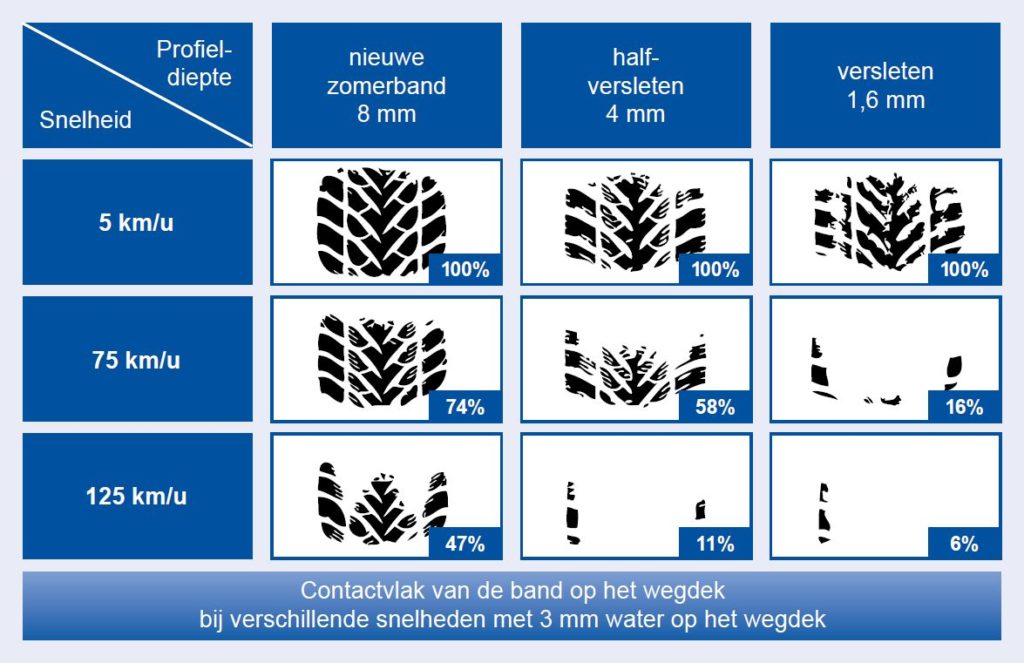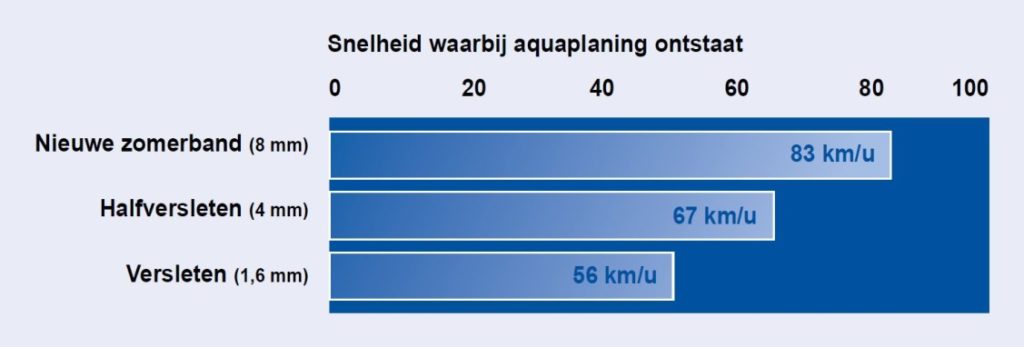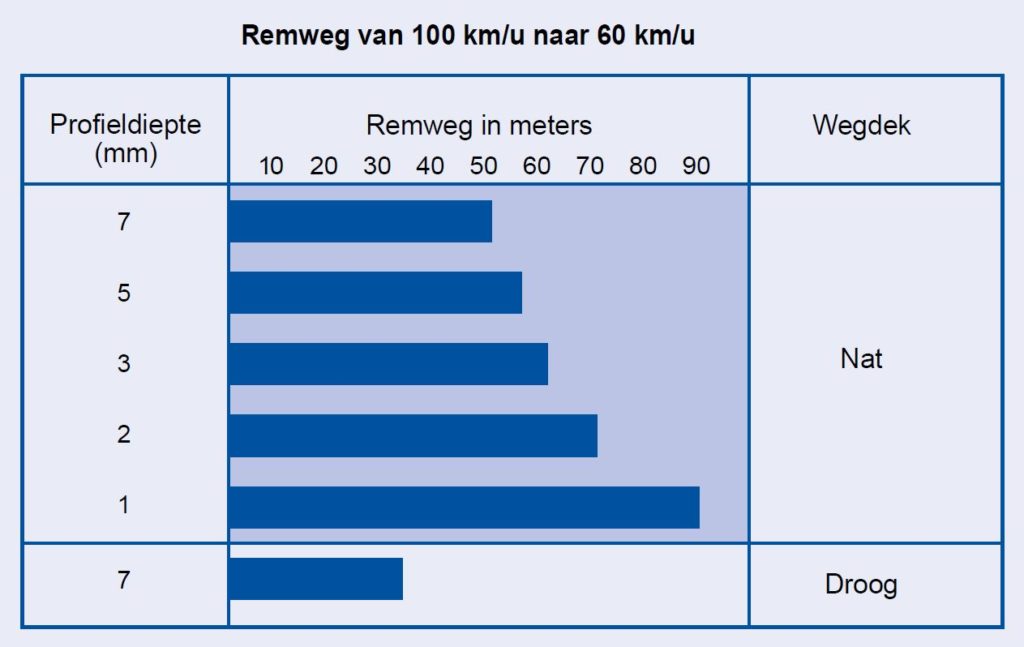Tyre maintenance
The tread depth of a tyre is very important. When it rains or the road is wet, the tread depth determines how much contact you have with the road. And therefore how much grip you have. The less profile the tyre has, the longer the braking distance. Moreover, there is then a chance of aquaplaning. The less tread, the harder it is for the tyre to drain the water. In racing, it is not for nothing that slicks (completely smooth tyres) are immediately replaced by profile tyres during a pit stop, if it starts to rain unexpectedly.
Contact with the road
You can make a print of the contact surface of a tyre on the road surface. Like a fingerprint. We did this for tyres with different tread depths, at different speeds and with 3 mm of water on the road surface. Two things stand out. The faster a car drives, the less contact it has with the road. But also: the less tread the tyre has, the less the contact is. The combination, low profile with high speed, is life-threatening. Contact is then almost non-existent.

Aquaplaning
If there is a lot of water on the road, aquaplaning can occur. The tyre loses contact with the road and becomes uncontrollable. If the tread depth decreases, aquaplaning occurs earlier. We measured the speed at which aquaplaning occurs with tyres of different tread depths on a road with 6 mm of water. The diagram shows what worn tyres do.

If the tyres on a car have different tread depths, there is a risk that one wheel will suffer aquaplaning earlier than the others. The car will then break out in an uncontrolled manner or skid. We therefore recommend that tyres with a tread depth difference of more than 3 mm are not fitted.
Braking distance
The braking distance on a wet road surface is always longer than on a dry road surface. The length of the braking distance on a wet road surface is also strongly determined by the tread depth of the tyre. The more tread depth, the shorter the braking distance.

Minimum field depth
The minimum tread depth for car tyres (summer and winter tyres) is 1.6 mm. This is a legal requirement. For road safety reasons we recommend changing summer tyres when the tread depth reaches 2 mm. This also prevents you from breaking the law unnoticed. Winter tyres, however, begin to lose their winter characteristics at 4 mm. We therefore recommend a minimum tread depth of 4 mm for winter tyres in extremely wintry conditions. A minimum tread depth of 1.6 mm also applies to commercial vehicle tyres.
Measuring the tread depth
Tread depth is measured in the main grooves of the tyre. The main grooves are located in the middle 3/4 of the tyre tread width. The so-called Tread Wear Indicator (TWI) shows whether the tyre has reached the legal minimum tread depth of 1.6 mm and is therefore worn. The TWI is then equal to the tread. For winter tyres, the Winter Wear Indicator shows whether the tread depth of 4 mm has been reached.

Source: VACO

